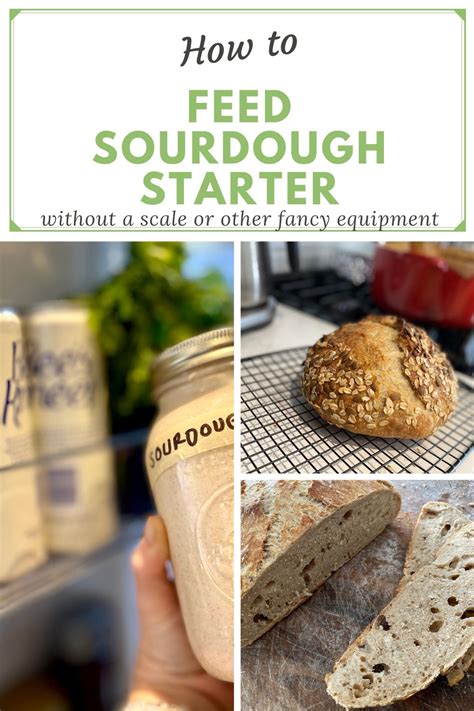How to Feed a Sourdough Starter: A Comprehensive Guide
Maintaining a healthy and active sourdough starter is crucial for baking delicious, tangy bread. This comprehensive guide will walk you through the process of feeding your starter, ensuring its longevity and providing tips for troubleshooting common problems. We'll cover everything from the basics to advanced techniques, helping you become a sourdough expert.
Understanding the Feeding Process
Feeding your sourdough starter essentially means providing it with fresh food – typically flour and water – to encourage the growth of beneficial yeasts and bacteria. This process sustains the starter's activity and prevents it from becoming dormant or dying. The frequency of feeding depends on several factors, including the type of flour used, the ambient temperature, and your starter's activity level.
Why is Feeding Essential?
Your sourdough starter is a living ecosystem. The microorganisms within it consume the flour and water, producing gases (carbon dioxide) and organic acids that give sourdough bread its characteristic flavor and texture. Without regular feeding, these microorganisms will starve, leading to a weak and inactive starter.
The Basic Feeding Method
This method is perfect for beginners and provides a solid foundation for maintaining a healthy starter.
What You'll Need:
- Mature Sourdough Starter: A bubbly and active starter is key.
- Flour: Bread flour or all-purpose flour works best. Experiment with different flours to find what your starter prefers.
- Water: Non-chlorinated water is recommended. Filtered or bottled water is ideal.
Step-by-Step Instructions:
-
Discard: Discard about half of your starter. This removes old, inactive bacteria and makes room for new growth. Don't worry; you can use the discarded starter in baking or compost it.
-
Measure: Add the same amount of flour that you discarded. For example, if you discarded 50g of starter, add 50g of flour.
-
Add Water: Gradually add water, aiming for a consistency similar to thick pancake batter. The exact amount of water will depend on your flour's absorption rate. Start with a similar weight to the flour (50g of water in this example) and adjust as needed to reach the desired consistency.
-
Mix Thoroughly: Gently stir the mixture until it's fully combined and smooth.
-
Store: Cover the container loosely (plastic wrap or a lid slightly ajar) and leave it at room temperature (ideally 70-75°F or 21-24°C).
-
Observe: Observe your starter over the next 4-8 hours. It should start to bubble and rise. The time it takes to rise will vary based on temperature and flour type.
Advanced Feeding Techniques
Once you're comfortable with the basic method, you can experiment with these techniques:
Feeding Frequency:
- Daily Feeding: Ideal for maintaining a very active starter, especially in warmer climates.
- Every Other Day Feeding: Suitable for most starters and a good balance between activity and convenience.
- Once-a-Week Feeding: Requires a refrigerator-based maintenance approach (see below).
Refrigerator Storage:
For long-term storage, you can keep your starter in the refrigerator. Feed it once a week, following the basic feeding method but then placing it back in the fridge after feeding.
Troubleshooting Common Problems
Inactive Starter:
If your starter isn't showing much activity (minimal bubbles), it might be underfed or too cold. Try feeding it more frequently or placing it in a warmer location.
Overly Sour Starter:
A very sour starter might indicate an imbalance of bacteria. Try reducing the feeding frequency.
Mold Growth:
Discard the starter immediately if you see any mold growth.
Conclusion
Mastering the art of feeding your sourdough starter is key to successful sourdough baking. By understanding the basics and experimenting with different techniques, you'll be able to maintain a healthy and active starter for years to come, consistently producing delicious bread. Remember to observe your starter's behavior, adapt your feeding schedule as needed, and enjoy the process!
